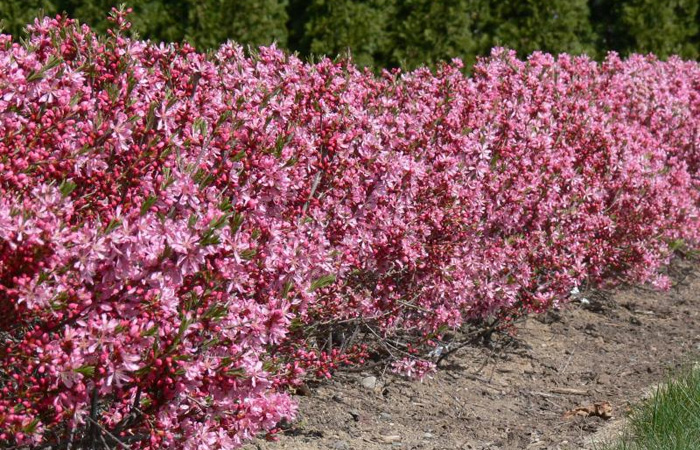To increase the variety of trees and shrubs we can plant in our landscape we often bring in new species from areas with a similar climate. One of the most common locations that align with our climate is the Siberian region of Russia. It has provided us with many variety including Russian Cyprus, Siberian elm and Russian Flowering Almond. The latter is the one I wish to discuss.
As the name suggests, its blossoms are by far its best feature. It has beautiful deep pink flowers in early spring. The blooms last for about 2 weeks long providing they do not get any late frost. The flowers open in early to mid-May giving an early pop of colour to your yard.
As a member of the Prunus family it is compatible with several of its members. Providing that the blooms are not damaged by frost they actually work as a good pollinator for apricots. The bloom time and colour of the flowers are actually quite similar. We tested the pollination comparability with my own apricot this spring. I currently have a rather impressive crop growing out.
Another great factor is the cold tolerance. Rated zone 2 it is a trustworthy addition to our prairie selection. We are hoping that in future years the Flowering Russian Almond will become a good substitute for the double flowering plum as it is more resilient and size manageable. It grows to be approximately 5′ tall and wide. It has the potential to sucker so keep this in mind when you plant it so that you are prepared to contain them or embrace the spreading. A 4″ deep barrier, like landscape edging, will be sufficient to keep the spreading sucker roots contained. Tilling a circle around the plant from time to time will also keep them trimmed.
Because of the almonds it bears and its suckering habit the Russian almond is a favourite of many birds and small creature that seek shelter and food from its branches. Although the almonds are unique they are purely aesthetic and taste bitter. They are great for the birds and animals; I highly recommend you leave the almonds for them. If you are a bird watcher or want to encourage more wildlife in your yard this could be an excellent addition to consider.




